The Best Robotic STEM Toys to Fill The Lego Mindstorms Hole in Your Heart

For almost a quarter of a century, Lego’s Mindstorms line, which allowed both kids and adults to build fully-functional bots from Lego and Technic pieces, was one of the most capable STEM toys available, both for those looking to dive into robotics and those who just wanted to build cool machines.
But after 24 years, Lego Mindstorms is being discontinued at the end of 2022, with Lego only promising to support its accompanying mobile apps for an additional two years. It’s heartbreaking, and while nothing may replace Lego Mindstorms entirely, there are some alternative STEM toys to consider for those interested in learning to code or building a robotic creation of their own.
Read more
Sphero Bolt Coding Robot
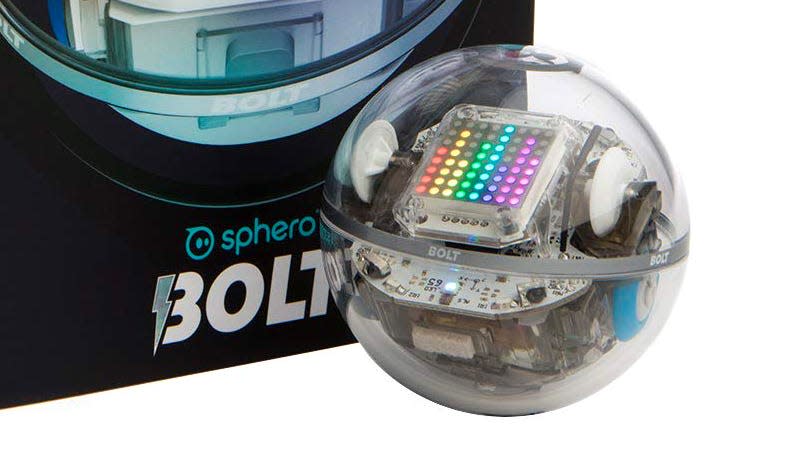
In recent years, Sphero is probably best known for its rolling BB-8 toy based on the chipper droid from the Star Wars sequels, as well as a tiny robotic R2-D2 that’s surprisingly animated and lifelike. The company has since moved away from licensed toys to focus on the education market, and has embraced its roots with Bolt: a $179 programmable rolling ball with a low-res dot matrix display inside. Like the BB-8 toy but without its head, the ball can be driven around like an RC toy, but the real appeal of Bolt is the Sphero app, which allows it to be programmed through an easy to learn drag and drop interface.
Sphero RVR+ Programmable Robot
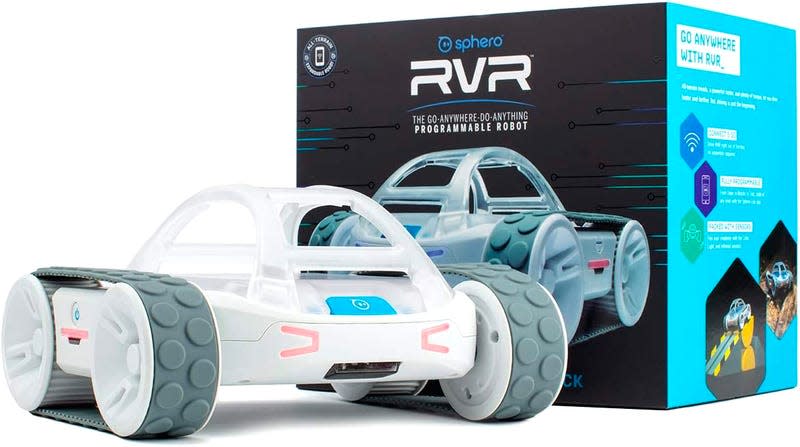
As neat as it is to see a ball rolling around on its own and turning on a dime, Sphero’s Bolt is completely self-contained and not upgradeable, and its smooth spherical design means it’s not very good at tackling terrain rougher than carpeting. The $279 Sphero RVR+ is a more advanced programmable robotic platform with tank treads that can tackle lots of different obstacles, plus it’s got a reconfigurable design that allows additional components like sensors or other upgrades to be mounted on top.
Lego Education Spike Prime Set
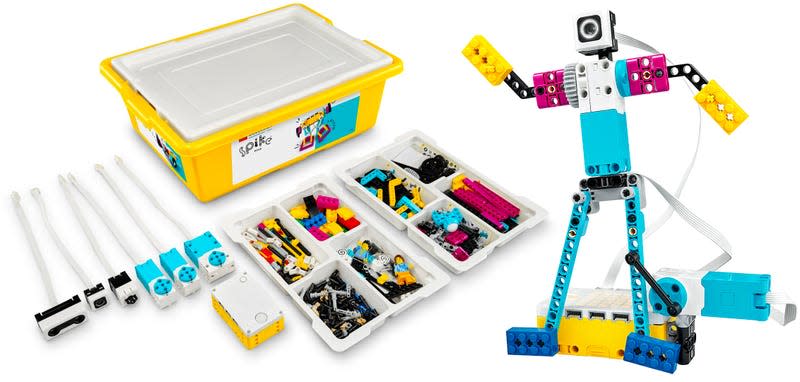
Mad at Lego for Mindstorms’ demise but not mad enough to stop buying your favorite building toy? Mindstorms will live on, in a limited fashion, through Lego’s Education division as Spike: a collection of building sets featuring Technic components, sensors, servo motors, and a central brick computer. Designed for schools to teach the basics of robotics, the introductory Spike Prime Set is a bit expensive at $384.95 (expansion sets are available, too). You’ll also have to worry about the chance that Lego might eventually end support for Spike as well.
Thames & Kosmos Mega Cyborg Hand
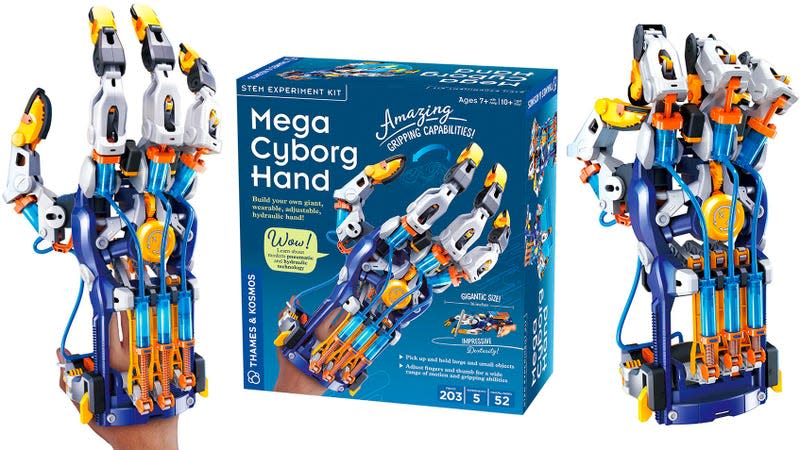
If you’ve got a kid interested in robotics but you’re worried they spend way too much time on their tablet or laptop, Thames & Kosmos’ Mega Cyborg Hand is a completely mechanical introduction to robot building. As the name implies, the building kit, which feels more like assembling a Gundam model than a Lego creation, lets kids create an oversized robotic hand they can wear and control using a series of actuators connected to pneumatic pumps that bring the cyborg hand’s fingers to life. And because it’s lacking in any electronics and doesn’t need batteries, it’s a relatively affordable option at $45.
Thames & Kosmos Robotics Workshop
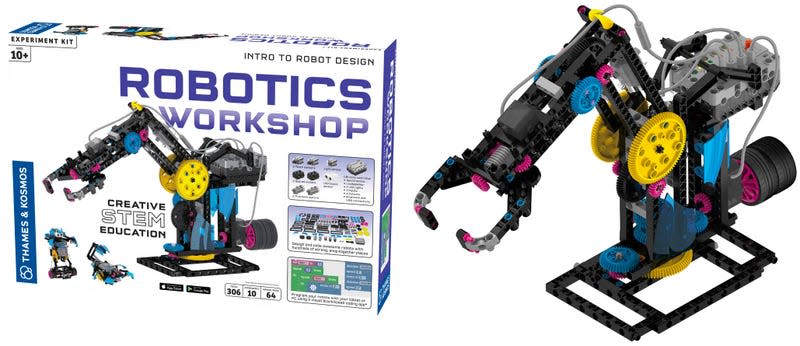
For those needing more than just a hand to satisfy their bot lust, Thames & Kosmos also offers a more elaborate, $270 Robotics Workshop kit, which includes hundreds of snap-together pieces, including motors and a host of sensors. An included guidebook starts with simpler creations like robots that can avoid obstacles using ultrasonic sensors, but advances the complexity of the bots until you’re able to build a full-on robotic arm that can pick things up and move them around.
Ozobot
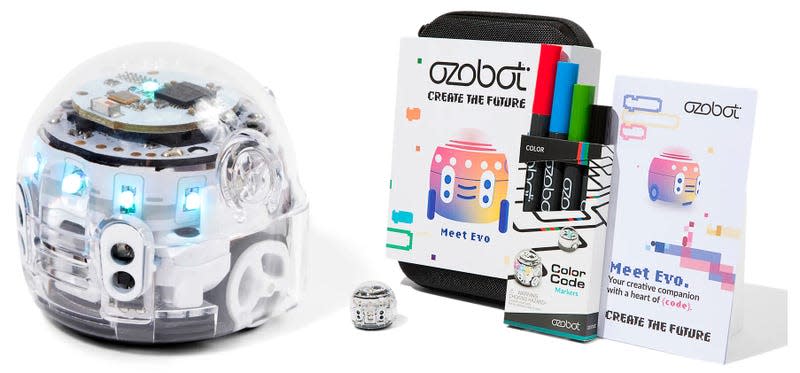
There’s no assembly required here, but that’s because the creators of the Ozobot have managed to cram a surprising amount of capabilities into a tiny rolling robot smaller than a golf ball. That means it can roam and autonomously navigate your desk using proximity and optical sensors, or do the same thing on that minuscule seat tray you’re forced to work and eat on during a flight. Despite its size, the $175 Ozobot includes LED lights, a speaker, a battery that’s good for about 60 minutes of play, and Bluetooth (allowing it to be connected to and programmed using an app on a mobile device).
VEX Robotics VEX IQ Super Kit
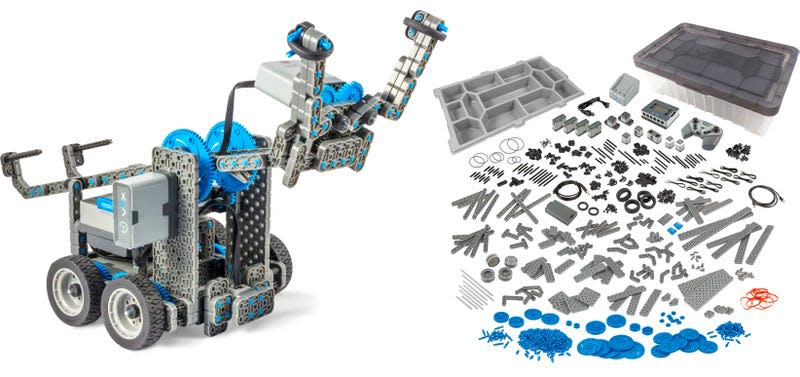
Also designed with schools and robotics clubs in mind, Hexbug’s $500 VEX IQ Super Kit is so large that it comes with its own storage bin and sorting tray to help keep its 800+ building components organized, including smart motors, sensors, and a wireless controller that can individually operate each motor. The set includes instructions for building an autonomous Clawbot, which will familiarize users with the various components, but from there a mountain of parts allows an almost unlimited number of capable bots to be assembled and programmed.
DJI RoboMaster S1
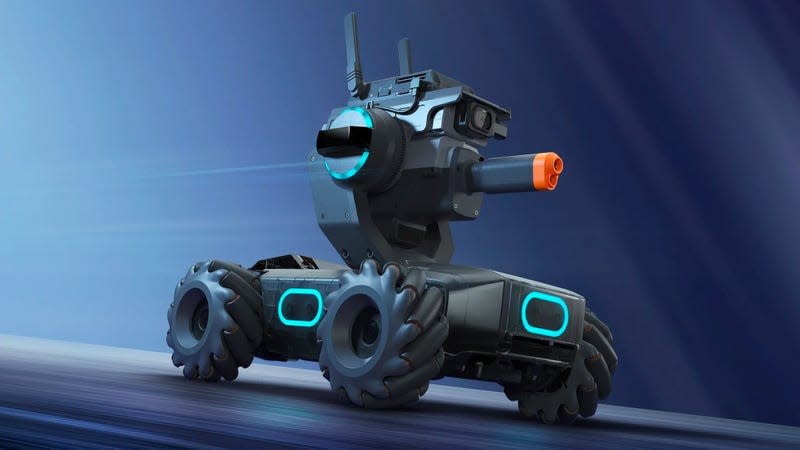
DJI is a company best known for its camera-equipped flying drones, but the RoboMaster S1, born from DJI’s annual RoboMaster robotics competition, is less about capturing compelling aerial footage and more about inspiring young minds and steering them towards a career in STEM. The robot looks like an advanced RC toy with its omni-directional wheels, but also features a live-streaming video camera, 46 programmable components including intelligent sensors, and a pellet-firing turret on top for autonomously hunting down other bots. It’s a highly-capable bot that’s also highly customizable, which helps explain its $550 price tag.
Petoi Robot Dog Bittle
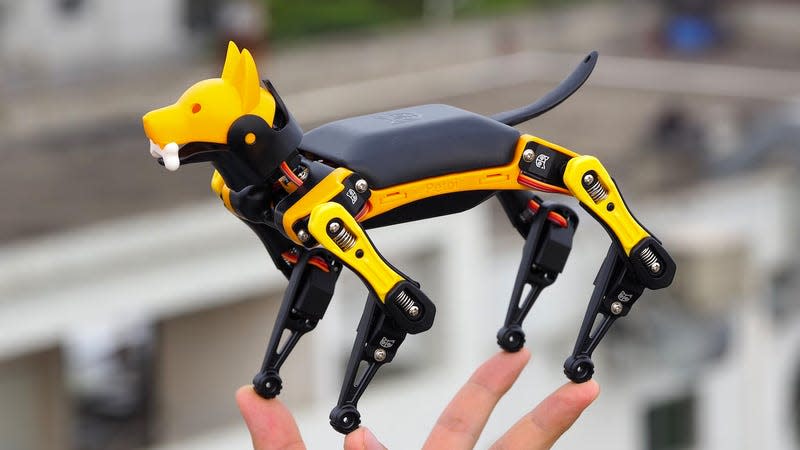
As impressive as Boston Dynamics’ robot SPOT dog is, few of us have $74,500 to spend on a robotic pet. Petoi might be the next best thing. Small enough to sit on your hand, it’s more like a robotic puppy. It’s able to walk around on four articulated legs like SPOT can, but is a tiny bit more affordable at $259 for a DIY kit version you build yourself, or a $269 pre-built option that diminishes some of the educational STEM value. Petoi is programmable and controllable through an app, but also open source and upgradeable, so you can try your hand at making it act and behave even more doglike—even if that just means barking at the mailman every morning.
Digital Dream Labs Vector 2.0
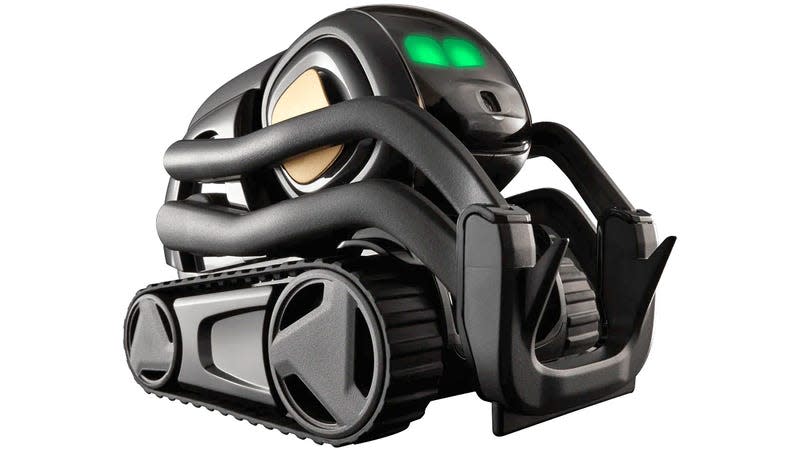
Anki first made a name for itself by creating a modern twist on slot cars: RC and autonomous toy vehicles that could race on a printed paper track without flying off in the corners. Later, the company introduced a pair of companion robots that were incredibly endearing thanks to a pair of expressive animated eyes courtesy of a former Pixar animator. Anki unfortunately didn’t make it, but a company called Digital Dream Labs has brought Vector back from the dead with a $400 Version 2.0 model that, like the original, can roam around a desk and serve as a virtual pet that likes to play games. For those looking to improve what Vector 2.0 can do, there’s the potential to introduce your own programming as well, but that might be a little advanced for kids whose first words weren’t in Python or C++.
More from Gizmodo
The Best Shortcuts On Mac: Snap Windows, Text to Speech, and More
How to Delete Your Twitter Account If Elon Musk Was Your Last Straw
Sign up for Gizmodo's Newsletter. For the latest news, Facebook, Twitter and Instagram.

